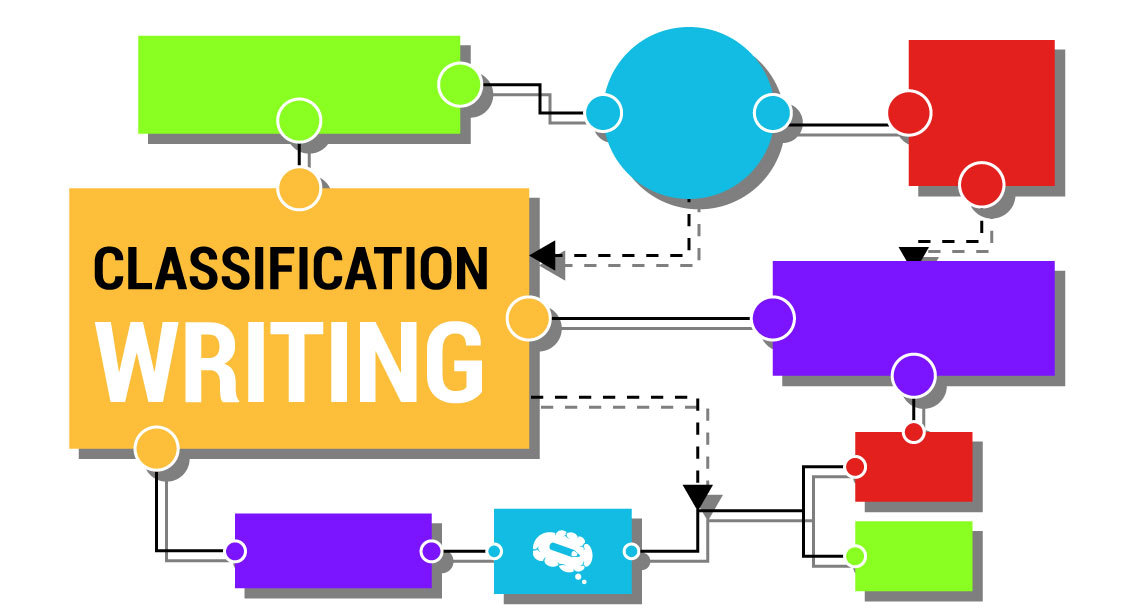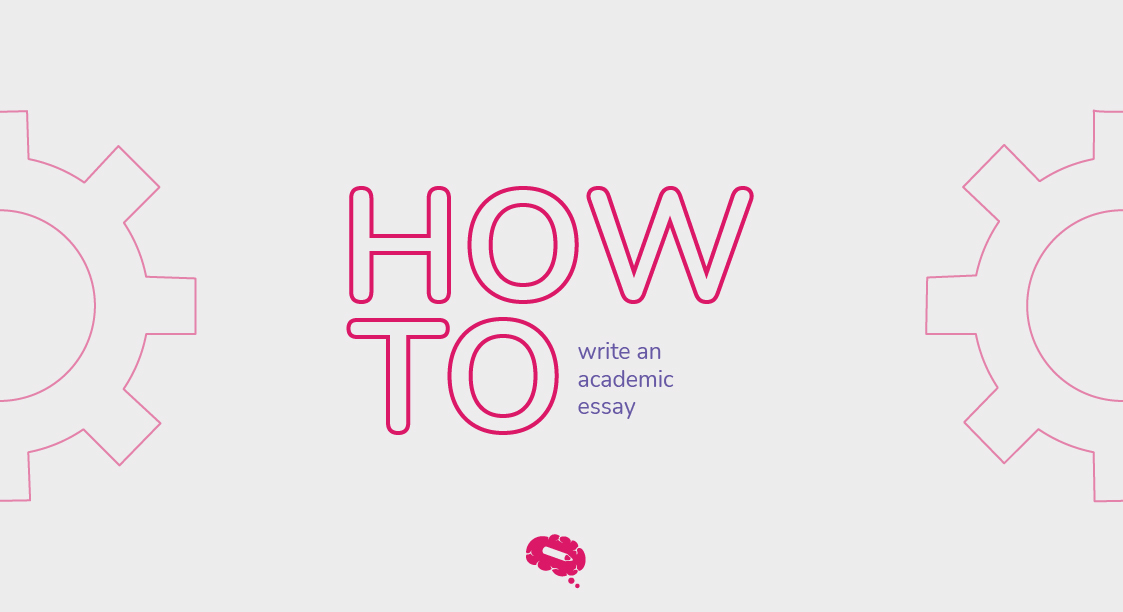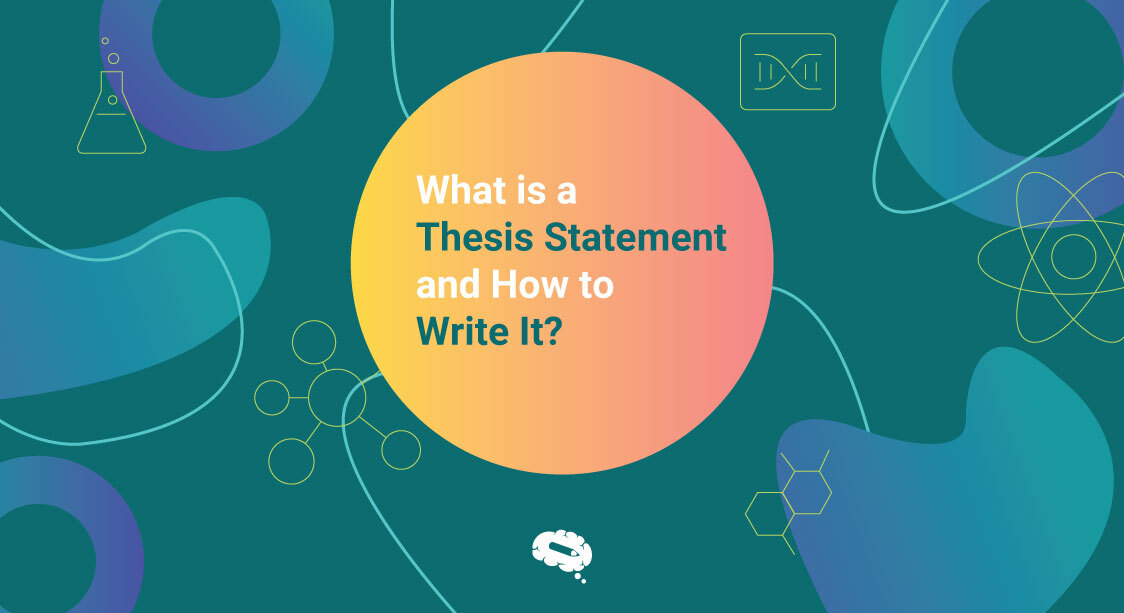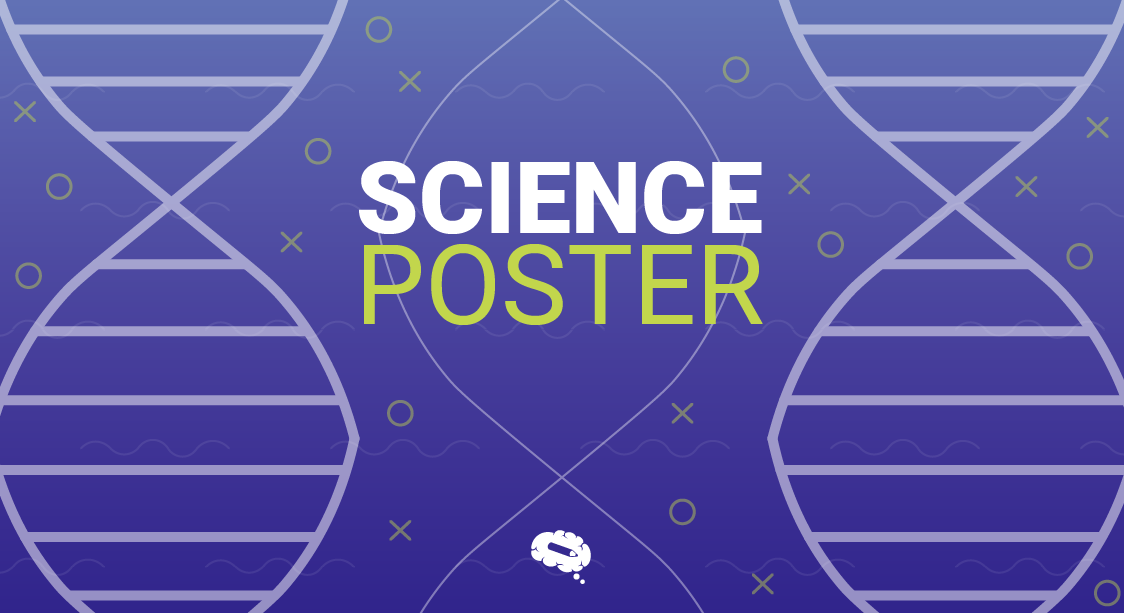Classification writing is a type of writing that organizes information into categories. This can be a helpful way to make sense of complex information and to communicate it effectively to others. It can be used in many fields, including academia, business, and government. In this article, we will explore the basics of classification writing. Whether we’re sorting animals into groups or arranging books by genre, classification gives us a clear way to understand things. We’ll take a closer look at classification writing, learning its basic principles, practical methods, and how it can be used in situations like academic essays and scientific research.
What is Classification Writing?
Classification writing is a form of expository writing that organizes and categorizes information into groups based on common characteristics, traits, or criteria. The primary goal of classification writing is to provide clarity and structure to complex or diverse subjects by sorting them into distinct categories. This allows readers to better understand the relationships between different elements and identify similarities and differences within the groups.
In classification writing, the writer typically presents a clear thesis statement that outlines the basis of the classification and then provides supporting details and examples for each category. The content is organized logically, with each category having its paragraph or section. Transitions are used to guide the reader smoothly from one category to the next. It is commonly used in academic writing, textbooks, research papers, and explanatory essays to provide structure and organization to a wide range of topics.
What Is A Classification Essay?
A classification essay is a form of expository writing that categorizes subjects based on specific criteria, aiming to provide clarity and organization. The essay begins with an introduction presenting the thesis and the categories to be discussed, followed by body paragraphs that elaborate on each category with examples and evidence. The conclusion summarizes the main points and emphasizes the significance of the classification. This type of essay is commonly used in academia to explain complex subjects by grouping them into distinct categories and offering readers a structured and comprehensible understanding of the topic.
Thesis Statement
A thesis statement is a concise and clear statement that appears at the end of the introduction of an essay or research paper. It serves as the main idea or central argument of the writing, guiding the focus and direction of the entire piece. A strong thesis is specific, argumentative, and supportable, giving readers a preview of the paper’s content and inviting them to engage with the author’s perspective. It ensures clarity and coherence, helping to maintain focus and structure throughout the academic work.
Read more here: What is a Thesis Statement and How to Write It?
Classification Essay Introduction
The introduction is the gateway to the essay, providing essential context and setting the tone for the reader. In a classification essay, the introduction is designed to capture the reader’s attention and introduce the broad topic that will be classified. Its primary purpose is to present the thesis statement, which outlines the basis for classification and the specific categories that will be discussed in the subsequent body paragraphs.
Engaging Techniques
To create an effective introduction in classification writing, writers often use various techniques to engage the reader from the outset. These techniques may include starting with a thought-provoking question, sharing an intriguing fact or statistic, presenting a relevant anecdote, or providing a vivid description of the subject matter. The aim is to generate interest and curiosity, encouraging the reader to delve further into the essay.
Significance Of The Thesis Statement
After grabbing the reader’s attention, the introduction should smoothly transition to the central focus of the essay. It clearly states the broad topic to be classified and establishes the context for the classification. The most critical element of the introduction is the thesis statement. This concise and clear statement appears at the end of the introduction and presents the central argument of the classification essay. The thesis statement outlines the specific criteria or basis for grouping items or ideas into categories.
Classification Essay Body Paragraphs
Body paragraphs are responsible for organizing and presenting the categories or groups that have been classified based on specific criteria. Here’s an explanation of each component of body paragraphs in classification writing:
Topic Sentences
The topic sentence is a critical element of each body paragraph in a classification essay. It acts as a clear and concise preview of the main category or group being discussed in that paragraph. It should directly relate to the thesis statement and the basis of classification established in the introduction. The topic sentence sets the tone and direction for the paragraph, guiding the reader’s understanding of what will be covered and how it contributes to the overall classification.
Supporting Evidence And Details
To justify the inclusion of items or ideas within a specific category, the writer must provide supporting evidence and relevant details. This evidence can take the form of specific examples, characteristics, traits, or any distinguishing features that define the items in the group. The goal is to demonstrate why the items in the category belong together based on the established criteria for classification. The writer should offer sufficient evidence to substantiate the classification and make it convincing to the reader.
Range Of Activities And Subject Matter
Each body paragraph in classification writing should encompass a broad range of activities or subject matter that fits within the assigned category. This variety helps readers understand the diversity of the group being discussed and gain a comprehensive understanding of the classification. Including multiple examples broadens the scope of the category and ensures that the classification is comprehensive and representative.
Basis For Classification
The basis for classification is the underlying principle or concept upon which items or ideas are grouped together. It is crucial to clearly explain the basis for classification in each body paragraph to maintain consistency and logic throughout the essay. The basis can be a specific characteristic, feature, or quality that the items share, allowing them to be categorized together.
Criteria For Classification
Criteria for classification are the specific standards or characteristics used to sort items or ideas into a particular category. These criteria should align with the established basis for classification and provide a clear rationale for grouping the items together. For example, when classifying cars, the criteria might be based on factors such as size, fuel efficiency, or price range. Defining the criteria precisely ensures that the classification remains coherent and well-organized.
Typical Representation Of The Broad Topic
In classification writing, each body paragraph presents a typical or common representation of the broad topic. The examples provided should be representative of the category being discussed, demonstrating the essential characteristics and features shared by the items or ideas within that group. This helps readers grasp the central elements of the category and understand its significance in the overall classification.
Classification Essay Conclusion
In a classification essay, the conclusion is the final part of the paper where the writer provides a summary of the sub-topics discussed in the body paragraphs and reiterates the thesis statement. The conclusion serves to bring closure to the essay by reinforcing the main points and restating the central argument.
Summary Of Subtopics
In the conclusion of a classification essay, the writer should briefly summarize the main categories or subtopics that were presented in the body paragraphs. This summary helps reinforce the organization and structure of the essay, reminding the reader of the different groups and how they contribute to the overall classification. The summary should be concise and to the point, providing a quick overview of what has been discussed.
Reiteration Of Thesis Statement
The conclusion is an appropriate place to restate the thesis statement that was introduced in the essay’s introduction. By reiterating the thesis, the writer reminds the reader of the main argument and the basis for classification. However, it is essential to rephrase the thesis statement rather than simply copying it word-for-word. This reiteration should reflect the main idea and core message of the thesis in a slightly different way to maintain interest and avoid redundancy.
The conclusion should not introduce any new information or present new categories. Instead, it should focus on summarizing the essay’s content and reinforcing the significance of the classification. The goal is to leave the reader with a strong impression of the essay’s central argument and a clear understanding of the categories discussed. A well-crafted conclusion contributes to the overall cohesiveness of the classification essay and leaves the reader with a sense of closure and satisfaction.
Organizational Structure
In classification writing, the organizational structure is how the different categories or groups are presented. In classification writing, the organizational structure is crucial for effectively categorizing and grouping items or ideas based on specific criteria. A well-organized classification essay allows readers to understand the relationships between different categories and easily follow the writer’s logic. There are two main types of organizational structure in classification writing:
Hierarchical
In a hierarchical organizational structure, the categories are arranged in a tree-like hierarchy. This means that each category has one or more subcategories, and each subcategory has one or more sub-subcategories, and so on. This type of organizational structure is often used for topics that have a natural hierarchy, such as plants, animals, or governments.
Functional Structure
The functional structure is one of the most common types of organizational structures. It groups employees based on their specialized functions and skills. In this arrangement, departments are created for each specific function, such as marketing, finance, human resources, operations, and so on. Each department is headed by a functional manager who oversees the activities and employees within that department.
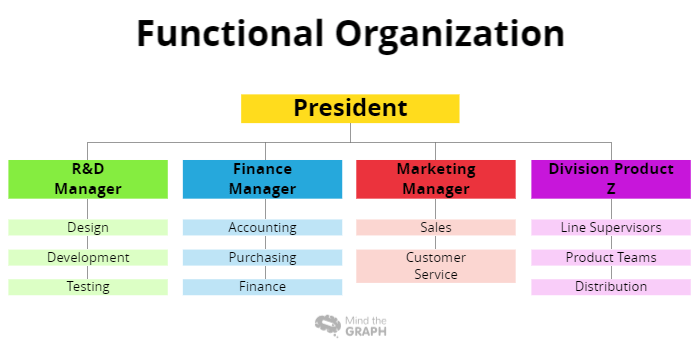
Professional And Custom Designs For Your Publications
Mind the Graph offers researchers a powerful solution to create stunning visuals that captivate their audience. With its professional and custom design features, researchers can craft visually appealing graphics and illustrations tailored to their specific publications. Whether presenting complex data, scientific concepts, or research findings, the platform’s user-friendly tools and extensive library of scientific icons and templates empower researchers to bring their ideas to life in an engaging and impactful manner. Mind the Graph empowers researchers to effortlessly enhance the visual appeal of their work, making it more accessible and compelling to their audience.

Subscribe to our newsletter
Exclusive high quality content about effective visual
communication in science.

